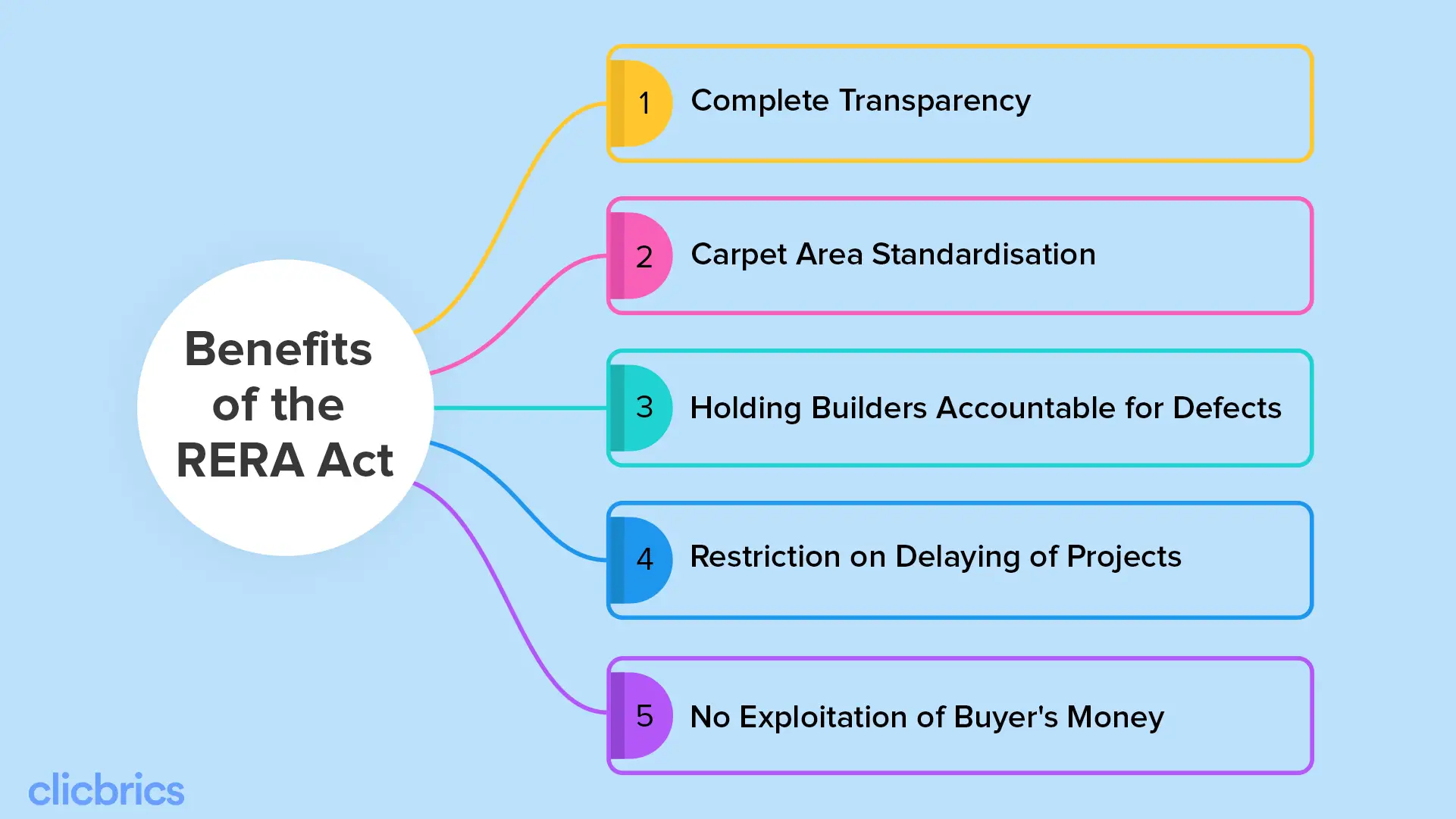RERA Act Defined & Simplified: Salient Features | Benefits
Table of Contents
- Defining the Features of the RERA Act
- Why does India need RERA?
- 5 Benefits of the RERA Act
- Complete Transparency
- Carpet Area Standardisation
- Holding Builders Accountable for Defects
- Restriction on Delaying of Projects
- No Exploitation of Buyer's Money
- Conclusion
Ever heard of the RERA Act?
Well, first things first - the RERA's full form in the real estate industry is the Real Estate Regulatory Authority. Intending to protect the interests of home buyers, the Government of India introduced this act in 2016. Though the Rajya Sabha initially passed the bill on March 10th, 2016, it came into force on May 1st, 2016.
Notably, the act works to standardise or systematise specific real estate industry-related rules and regulations.
Defining the Features of the RERA Act
The RERA rules under the act were established to improve the consistency and accountability of housing transactions. Let's see some of the most critical aspects of the RERA Act.
- The Real Estate Regulatory Authority Act across the country was introduced to keep track of, resolve, and arbitrarily settle disputes that arise in real estate developments.
- Every real estate project has to be registered under the RERA Act. The regulatory authorities have jurisdiction over the projects. If the seller has not adhered to specific guidelines, the officials have the right to reject the project.
- If a promoter is about to transfer their property-related liabilities to any third party, written consent will be made mandatory. Also, you have to take written approval for the same from RERA.
- If a buyer faces any loss, usually because of defective land tiles, it will result in the promotor paying compensation.
- If an individual encounters any violation of the RERA Act by the promoter/agent, then the individual holds the right to file a complaint through RERA.
- After confirming a mistake, the RERA officials have the right to restrict the promoter from performing any activities.
- If the individual is not satisfied with the final decision of RERA real estate officials, then the individual can take this further to the Appellate Tribunal.
Also Read: Rights and Duties of Homebuyers under RERA
Why does India need RERA?
Many dreams of buying a home, but not all successfully achieve that dream. This was more prominent because of the unfair and illegal practices of the builders. To end such practices, the RERA Act was introduced, where specific regulations were made to be followed by every builder at the time of building or selling properties in India.
If builders do not comply with the RERA ACT, home buyers have the full legal right to file a complaint against the builder - thus bringing complete transparency to property buyers.
Also Read: Detailed Guide to UP-RERA: Features, Documents Required and Charges
5 Benefits of the RERA Act

Earlier buyers only knew real estate is more than just house prices. The contractor had the luxury of creating a buyer's agreement based on his comfort choices, which encouraged many fraudsters to perform scams. With an increase in such cases, the Indian government decided to launch the RERA Act, which aims to protect the buyers' interests while providing a sense of security.
1. Complete Transparency
The RERA Act mandates builders to guarantee detailed transparency in the information passed to home buyers. The details should also be up-to-date, and buyers must be well-informed about the layout of the building.
2. Carpet Area Standardisation
To calculate the property price, there was no particular parameter set, and builders used to set the property's cost based on their terms and conditions. But since the introduction of the RERA Act, the developers and builders have received a standard parameter in terms of the formula to calculate the carpet area.
Also Read: Everything About Carpet Area, Built-Up Area and Super Built-Up Area
3. Holding Builders Accountable for Defects
To protect home buyers from poorly built properties, one of the clauses under the RERA Act ensures that buyers do not encounter any loose ends at the time of purchase. Because of this, builders have prioritised construction quality as the most common factor faced by home buyers. If the buyer encounters any defects, the duty to repair them goes directly to them. Nevertheless, the fault or error should be rectified within 30 days of notification.
4. Restriction on Delaying of Projects
Earlier, buyers used to encounter the inconvenience of not receiving possession of the land on time. But now, this practice has been abolished. Builders have to complete the project within the given period, and failing to do so will result in a 2% interest rate above the lending rate offered by the SBI. In the worst-case scenario, builders could also face a three-year prison sentence.
Also Read: Top RERA-Approved Ready-to-Move-In Projects in Mumbai
5. No Exploitation of Buyer's Money
Around 70% of the money obtained from home buyers must be deposited by builders or real estate developers into various escrow accounts, from which money can be retrieved for construction with the approval of CAs and engineers. Developers can only demand up to 10% of the property's cost before drafting a sale agreement.
Because of the RERA Act implementation, many malpractices by real estate developers and builders have now been reduced.
Also Read: Top RERA-Approved Ready-to-Move-in Projects in Chennai
Conclusion
The RERA Act was introduced to simplify home buying by promoting industry transparency, accountability, and efficiency. And indeed, many malpractices and fraud acts have been eradicated since its implementation. The act ensures that the interests of both parties are safe and the real estate builders are adequately following the buying and selling processes.
Recent Articles
View All